Remove the front wheel & tire.
Tightening torque :
88.3 ~ 107.9 Nm (9.0 ~ 11.0 kgf.m, 65.9 ~ 79.6 lb-ft)
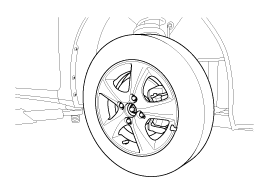
Remove the front wheel & tire.
Tightening torque :
88.3 ~ 107.9 Nm (9.0 ~ 11.0 kgf.m, 65.9 ~ 79.6 lb-ft)

Disconnect the pressure hose (A), return hose (B) and then drain the power steering oil.

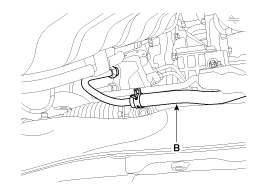
Disconnect the stabilizer link with the front strut assembly after loosening the nut.
Tightening torque :
98.1 ~ 117.7 Nm (10.0 ~ 12.0 kgf.m, 72.3 ~ 86.8 lb-ft)
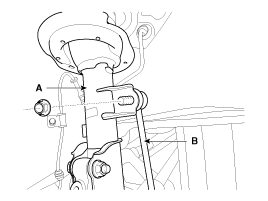
Loosen the nut and then remove the tie-rod aen (A) with front axle.
Tightening torque :
23.5 ~ 33.3N.m(2.4 ~ 3.4kgf.m, 19.4 ~ 24.6lb-ft)
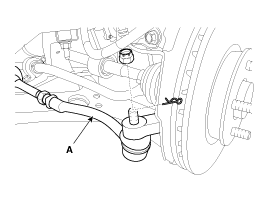
Loosen the nut and then remove the lower arm (A).
Tightening torque :
58.8 ~ 70.6 Nm (6.0 ~ 7.2 kgf.m, 43.4 ~ 52.1 lb-ft)
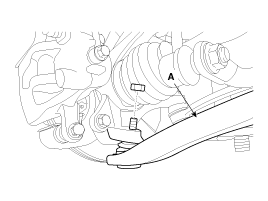
Loosen the bolt (A) and then disconnect the universal joint assembly from the pinion of the steering gear box.
Tightening torque :
32.4 ~ 37.3N.m(3.3 ~ 3.8kgf.m, 23.9 ~ 27.5lb-ft)
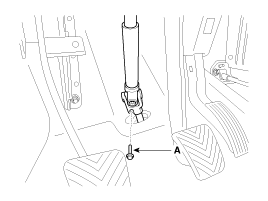
• Lock the steering wheel in the straight ahead position to prevent the damage of the clock spring inner cable when you handle the steering wheel.
• Do not use the universal joint bolt again.
Remove the rubber hanger (A).
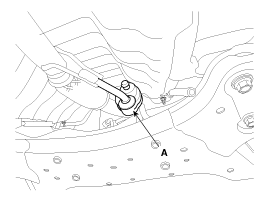
Remove the cross member from the body by loosening the roll rod (A) mounting bolts & nuts.
Tightening torque :
53.9 ~ 63.7 Nm (5.5 ~ 6.5 kgf.m, 39.8 ~ 47.0 lb-ft)
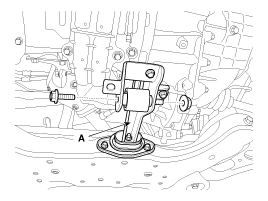
Loosen the bolts & nuts and then remove the front sub frame.
Tightening torque :
156.9 ~ 176.5 Nm (16.0 ~ 18.0 kgf.m, 115.9 ~ 130.2 lb-ft)
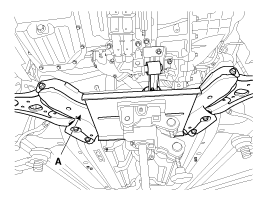
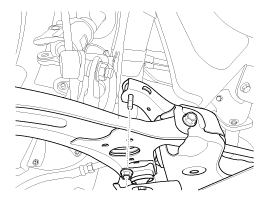
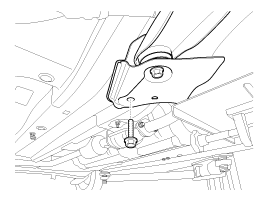
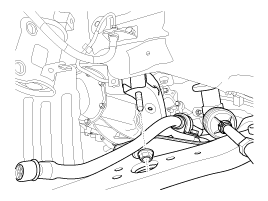

Remove the steering gearbox (A) from the cross member by loosening the mounting bolts.
Tightening torque :
58.8 ~ 78.8 Nm (6.0 ~ 8.0 kgf.m, 43.4 ~ 57.9 lb-ft)
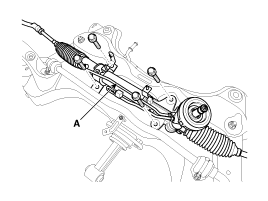
Installation is the reverse of the removal.
Add power steering fluid to resevoir.
Bleed the power steering system.
(Refer to ST group - Air bleeding)
Remove the tie rod end (B) from the tie rod (A).
Tightening torque :
49.0 ~ 53.9 N.m (5.0 ~ 5.5 kgf.m, 36.1 ~ 39.8 lb-ft)
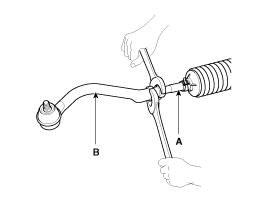
Remove the bellows band (A).
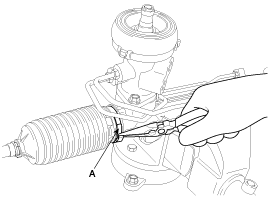
Remove the bellows clip (A).
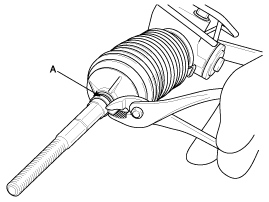
Pull the bellows out toward the tie rod.
Check for rust on the rack when the bellows are replaced.
Remove the feed tube(A) from the rack housing.

While moving the rack slowly, drain the fluid from the rack housing.[Boh side]
Remove the tab washer (A) which fixes the tie rod (B) and rack (C).
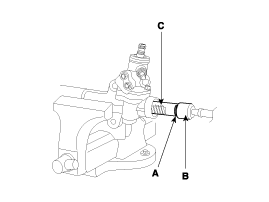
Remove the tie rod (B) from the rack (A).
Tightening torque :
107.9 ~ 127.5 N.m (11.0 ~ 13.0 kgf.m, 79.6 ~ 94.0 lb-ft)
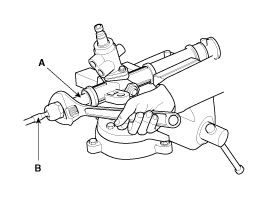
Remove the tie rod (B) from the rack (A), taking care not to twist the rack.
Remove the rack bushing (A) and oil seal (B).
Tightening torque :
85.0 ~ 95.0 N.m (8.5 ~ 9.5 kgf.m, 61.5 ~ 68.7 lb-ft)
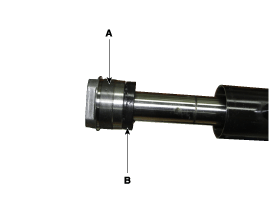
Remove the yoke plug (B) with a 14mm socket (A).
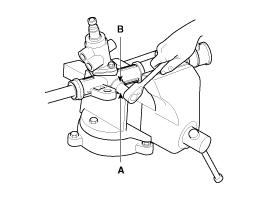
Remove yoke plug (A), rack support spring (B), rack support yoke (C) and bushing (D).

Remove the reck bar from the reck housing.
Loosen the pinion plug (A) and pinion lock nut (B).
Tightening torque
Pinion plug : 21.0 ~ 35.0 N.m (2.1 ~ 3.5 kgf.m, 15.2 ~ 25.3 lb-ft)
Pinion lock nut : 40.0 ~ 50.0 N.m (4.0 ~ 5.0 kgf.m, 28.9 ~ 36.2 lb-ft)
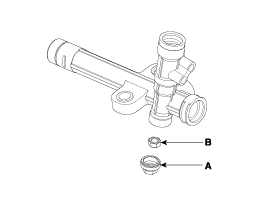
Disassembly the Pinion Valve Assembly.
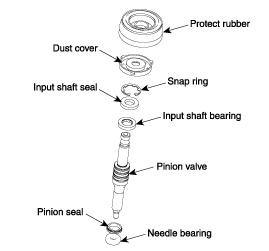
Reassembly is the reverse of the disassembly.
Rack
Check for rack tooth face damage or wear
Check for oil seal contact surface damage
Check for rack bending or twisting
Check for oil seal ring damage or wear
Check for oil seal damage or wear

Pinion valve
Check for pinion gear tooth face damage or wear
Check for oil seal contact surface damage
Check for seal ring damage or wear
Check for oil seal damage or wear
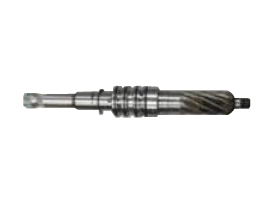
Bearing
Check for seizure or abnormal noise during a bearing rotation
Check for excessive play
Check for missing needle bearing rollers
Others
Check for damage of the rack housing cylinder bore
Check for boot damage, cracking or aging